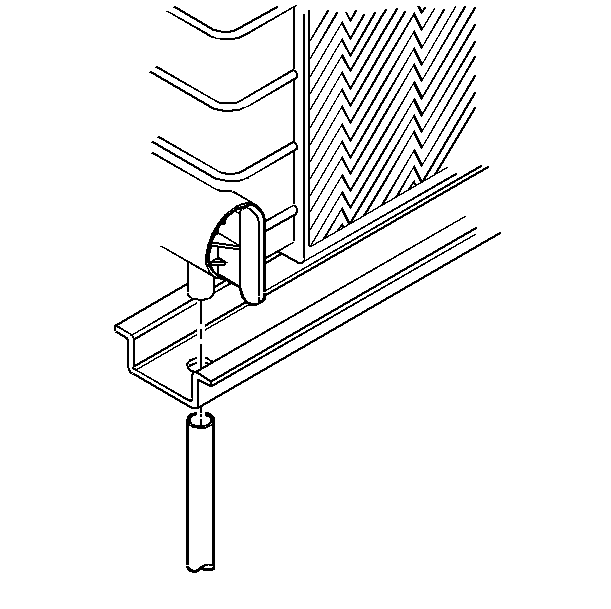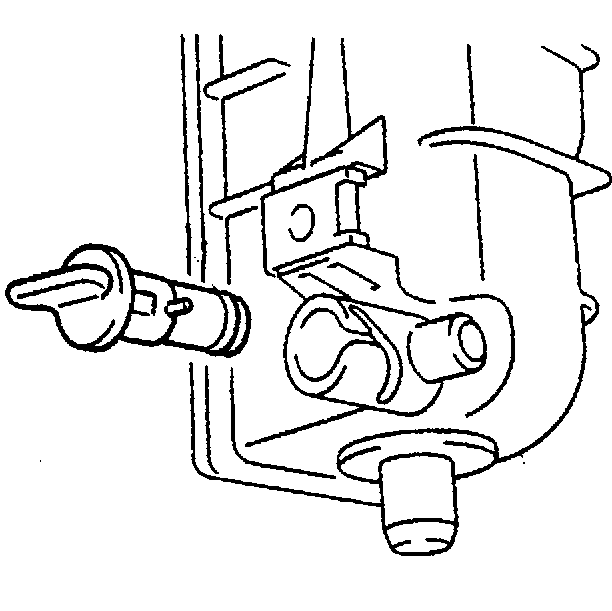Glycol Usage
Before you drain and refill the cooling system, inspect the system. Perform any service needed to ensure that the system is clean, does not leak, and is in proper working order.
Some coolant manufacturers mix other types of glycol into their coolant formulations. Propylene glycol is the most common new ingredient. However, do not use propylene glycol in GM vehicles that were manufactured with Dex-Cool coolant.
A hydrometer does not always provide a correct measurement of freeze protection when anything other than ethylene glycol and water is being tested. The degree of inaccuracy varies depending on the proportion of other glycols present in the coolant.
Hydrometers test the amount of glycol in a mixture by measuring the specific gravity of the mixture: the more ethylene glycol, the higher the float balls go, and the better the freeze protection. Because ethylene glycol and propylene glycol do not have the same specific gravities, hydrometer readings of mixtures containing propylene glycol give incorrect values. Use a refractometer when you test coolant. Refractometers test the amount of glycol in a coolant mixture by measuring the speed of light as the light passes through the fluid, and is not affected by the specific gravity of the glycol.
Engine Coolant Recycling
Tools Required
GM approved Recycling System such as Pro Clean (Available in the GM Dealer Equipment Program)
Whenever the cooling system needs maintenance or repairs, remove and replace the coolant with qualified new coolant.
If you only drain the radiator, up to 50 percent of the used, contaminated coolant can remain in the cooling system.
Use any of the following methods in order to remove the coolant:
| • | Use a waterless coolant evacuation system, available in the GM Dealer Equipment program, or equivalent, that removes the used coolant. |
| • | Recover the used coolant. Store the coolant in a used coolant holding tank. Submit the used coolant for recycling on a regular basis. |
| Important: Do not recycle coolant on vehicles manufactured with GM Goodwrench Dex-Cool. |
Draining Procedure
- Park the vehicle on a level surface.
- When the engine is cool, remove the surge tank cap. Refer to Radiator Assembly .
- Insert a piece of 5/16 inch fuel line tubing, or equivalent, through the lower tie bar. Attach the hose over the radiator drain tube.
- Open the radiator drain cock at the bottom left-hand side of the radiator end tank.
- On the 2.4L engine, remove the engine block coolant drain hole plug.
- On the 3.1L engine, remove the front and the rear engine block coolant drain hole plug.
- Allow the coolant to drain completely.
- Inspect the drained coolant.
Notice: When adding coolant, use DEX-COOL® coolant. If silicated coolant is added to the system, premature engine, heater core or radiator corrosion may result. In addition, the engine coolant will require change sooner-at 50 000 km (30,000 mi) or 24 months.
Caution: With a pressurized cooling system, the coolant temperature in the radiator can be considerably higher than the boiling point of the solution at atmospheric pressure. Removal of the surge tank cap, while the cooling system is hot and under high pressure, causes the solution to boil instantaneously with explosive force. This will cause the solution to spew out over the engine, the fenders, and the person removing the cap. Serious bodily injury may result.
Caution: Under some conditions, the ethylene glycol engine coolant is combustible. In order to help avoid being burned, do not spill the antifreeze or the coolant on the exhaust system or the hot engine parts.


For procedures requiring the cooling system to be partially drained, opening the radiator drain cock provides sufficient draining. No further actions should be required.
Notice: Dispose of used engine coolant in the proper manner, such as in a used engine coolant holding tank. DO NOT POUR USED ENGINE COOLANT DOWN A DRAIN! Ethylene glycol antifreeze is a very toxic chemical. Do not dispose of coolant into the sewer system or ground water. This is illegal and ecologically unsound.
| • | If the coolant is discolored, flush the cooling system. Refer to Flushing . |
| • | If the coolant appears normal, continue with the filling procedure. |
Filling Procedure
- Close the radiator drain cock.
- Remove the hose from the radiator drain.
- Install the engine block coolant drain plugs, if these were removed. Use pipe sealer, GM P/N 1052080, on the plug.
- Refill the cooling system.
- Fill the surge tank (3) with the proper mix of coolant to just above the small cylinder (2) at the base of the tank opening, or until the level reaches the split line (1) formed by the black and tan parts of the tank.
- Install the surge tank cap. Then do the following steps:
- Turn OFF the engine.
- Observe the level of the coolant in the surge tank.
- Install the surge tank pressure cap onto the surge tank with hand tight pressure.
- After servicing the cooling system, an intermittent low coolant lamp may illuminate during extreme driving maneuvers. In order to eliminate this condition, remove the surge tank cap and add coolant to a level at or above the split line of the tank when the system is cold.


Important: When refilling the cooling system, add 2 crushed engine coolant supplement sealant pellets, GM P/N 3634621, or equivalent.

Important: On vehicles equipped with 3.1 L engine, open the Coolant Air Bleed Valve on the Thermostat Bypass Pipe/Heater Pipe Assembly. Once a continuous stream of coolant is expelled close valve.
Caution: Keep hands, tools, and clothing away from the electric engine coolant fans in order to help prevent personal injury. These fans are electric and can turn on whether or not the engine is running. The fans can start automatically with the ignition in the ON position.
| 6.1. | Block the drive wheels. |
| 6.2. | Set the parking brake. |
| 6.3. | Place an automatic transaxle in PARK. Place a manual transaxle in NEUTRAL. |
| 6.4. | Start the engine. |
| 6.5. | Let the engine idle until the upper radiator hose starts to get hot. |
If the coolant is lower than the small cylinder, remove the surge tank cap and add the coolant to the surge tank until the level reaches the split line of the tank.
